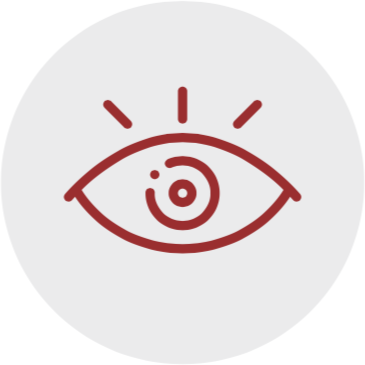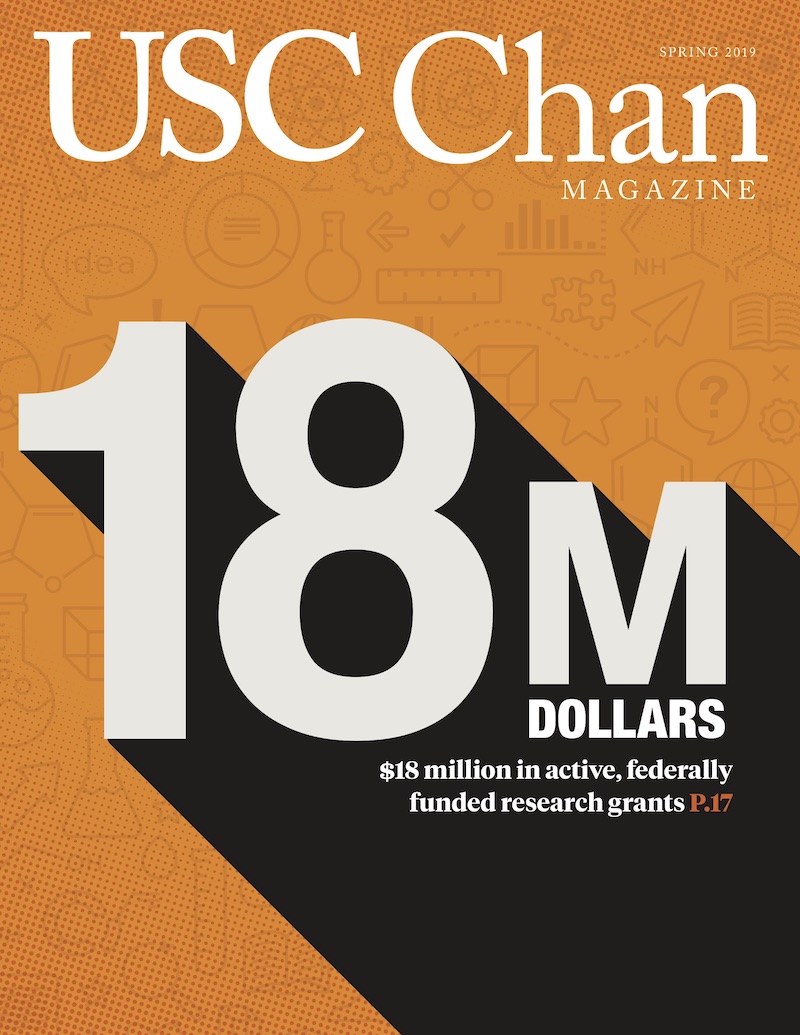New Strategic Plan to Put Five-Year Goals into Motion
After more than a year in development, USC Chan Strategic Plan FY 2019-23 was officially adopted in late 2018. The plan outlines six goals guiding the division’s growth, priorities and operations throughout the next five years. Beginning in early 2019, eight strategy implementation teams composed of faculty, staff and students began working to put next steps into action.
By Mike McNulty ’06, MA ’09, OTD ’10
“The overarching task facing every successful, forward-thinking organization is to answer basic questions, such as ‘Where does our organization stand now?;’ ‘What’s our vision for the future?;’ and ‘How do we best chart a course from today to tomorrow?,’” said Associate Dean and Chair Grace Baranek. “USC Chan is no exception. I am so proud of this new strategic plan that empowers us to do so.”
In general, strategic planning is the process of carefully considering those complex questions, examining opportunities and challenges, responding with an agreed-upon framework of goals and tactics to pursue and monitoring measurable outcomes.
In addition to the new goals, the plan reaffirms USC Chan’s preexisting mission statement, offers a new vision statement and, for the first time, defines six organizational core values at the heart of all activities across the division.

“You can’t judge success simply by outcomes achieved — success is also measured by our ethics enacted,” Baranek said. “These six core values promise that what we do is only as good as how and why we do so.”
Building the blueprint
USC Chan Strategic Plan FY 2019-23 was crafted through a four-phase, year-long process that was led by a steering committee made of Chan faculty, staff and students who worked in tandem with consultants from AMC Strategies, LLC. AMC Strategies has previously partnered with higher education institutions and academic medical centers, including Children’s Hospital Los Angeles, Duke Health and Stanford Health Care.
Input during the plan’s development was provided by more than 700 people — including Chan faculty, staff, alumni and Board of Councilors members, USC academic leaders and community partners from fieldwork education sites — via individual and group interviews, focus groups and electronic survey. A digital “comment box” was also available for stakeholders to provide both identified and anonymous feedback. Its ultimate intention was to foster as transparent and responsive a process as possible. Open-ended feedback delivered through the comment box broadly covered topics such as curriculum, cultural sensitivity and potential collaborations.
“At the outset, I wanted to ensure our strategic planning was purposeful, data-driven and collaborative,” Baranek said. “I am pleased with how we have been able to deliver on those objectives, and I am confident we have created an inspirational and achievable plan.”
A plan in place
With the new plan in hand, eight strategic implementation teams are currently refining actionable tactics, assigning “champion” leaders who have the capacity to execute action items and identifying resources needed to enact sustainable change. Each of those eight teams are tracking their efforts along with faculty members Emily Schulze MA ’16, OTD ’17 and Stephanie Mielke MA ’00, OTD ’06, who are coordinating the plan’s many moving parts. Dashboards of key objectives and measures will also help the teams track their short- and long-term progress, as the division together looks ahead to the year 2023.
“There’s a saying that a goal without a plan is just a wish,” Baranek said. “Thanks to this plan, together we can realize USC Chan’s vision of leading innovation to advance health and well-being through meaningful occupations.”

MISSION
Through innovative research, education and clinical practice, the USC Chan Division of Occupational Science and Occupational Therapy optimizes people’s engagement in the ordinary and extraordinary activities of life.

VISION
Lead innovation to transform health and well-being through meaningful occupations.

CORE VALUES
Integrity — Fulfilling our commitment to honesty, transparency and accountability for our actions and outcomes.
Collaboration — Working with partners across disciplines and in the community to identify needs and develop solutions.
Inclusion — Embracing diversity, full participation and health equity.
Distinction — Pursuing unmatched excellence and setting the highest standards of quality in all our endeavors.
Innovation — Cultivating curiosity, creative thinking and novel methods that positively impact pressing social and health needs.
Compassion — Caring deeply and genuinely for people and all elements of the human condition.

STRATEGIC GOALS
Synergistic Collaboration — Leverage unique strengths and fortify convergence across education, research and practice.
Groundbreaking Approaches — Generate and integrate knowledge to advance occupational science and occupational
therapy.
Transformative Partnerships — Establish impactful partnerships within and outside of the USC community.
Leadership Development — Prepare diverse leaders with a strong identity and understanding of occupation and its power to transform people and society.
Knowledge Mobilization — Accelerate dissemination and movement of discoveries into active use for societal impact.
Healthy Communities — Improve health equity, well-being and quality of life across local, national and global communities.
⋯






